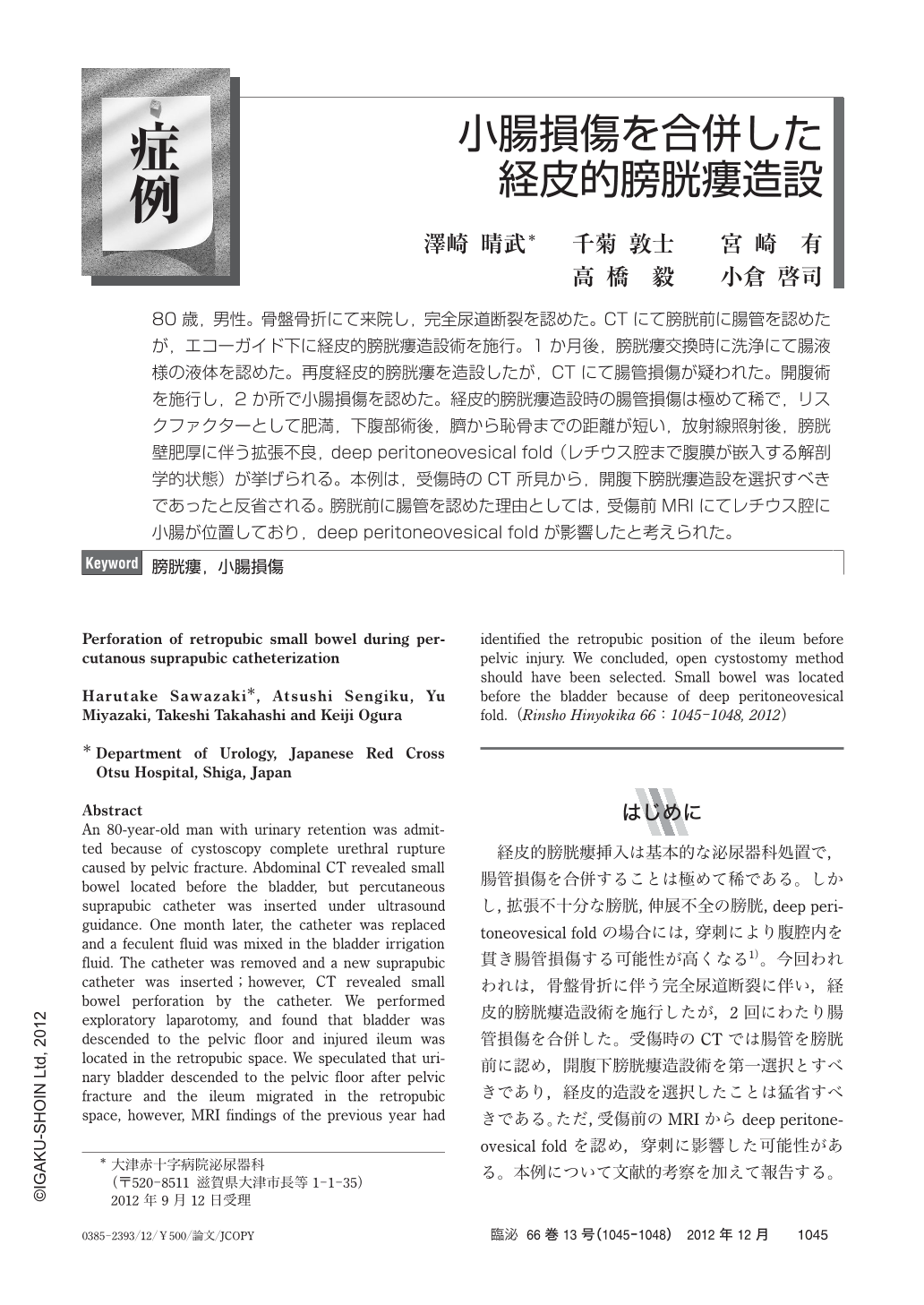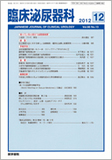Japanese
English
- 有料閲覧
- Abstract 文献概要
- 1ページ目 Look Inside
- 参考文献 Reference
80歳,男性。骨盤骨折にて来院し,完全尿道断裂を認めた。CTにて膀胱前に腸管を認めたが,エコーガイド下に経皮的膀胱瘻造設術を施行。1か月後,膀胱瘻交換時に洗浄にて腸液様の液体を認めた。再度経皮的膀胱瘻を造設したが,CTにて腸管損傷が疑われた。開腹術を施行し,2か所で小腸損傷を認めた。経皮的膀胱瘻造設時の腸管損傷は極めて稀で,リスクファクターとして肥満,下腹部術後,臍から恥骨までの距離が短い,放射線照射後,膀胱壁肥厚に伴う拡張不良,deep peritoneovesical fold(レチウス腔まで腹膜が嵌入する解剖学的状態)が挙げられる。本例は,受傷時のCT所見から,開腹下膀胱瘻造設を選択すべきであったと反省される。膀胱前に腸管を認めた理由としては,受傷前MRIにてレチウス腔に小腸が位置しており,deep peritoneovesical foldが影響したと考えられた。
An 80-year-old man with urinary retention was admitted because of cystoscopy complete urethral rupture caused by pelvic fracture. Abdominal CT revealed small bowel located before the bladder, but percutaneous suprapubic catheter was inserted under ultrasound guidance. One month later, the catheter was replaced and a feculent fluid was mixed in the bladder irrigation fluid. The catheter was removed and a new suprapubic catheter was inserted;however, CT revealed small bowel perforation by the catheter. We performed exploratory laparotomy, and found that bladder was descended to the pelvic floor and injured ileum was located in the retropubic space. We speculated that urinary bladder descended to the pelvic floor after pelvic fracture and the ileum migrated in the retropubic space, however, MRI findings of the previous year had identified the retropubic position of the ileum before pelvic injury. We concluded, open cystostomy method should have been selected. Small bowel was located before the bladder because of deep peritoneovesical fold.

Copyright © 2012, Igaku-Shoin Ltd. All rights reserved.


